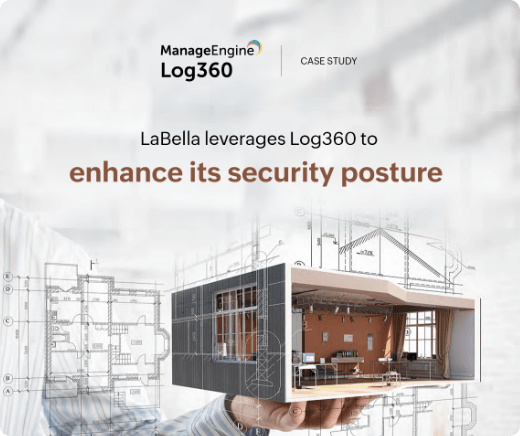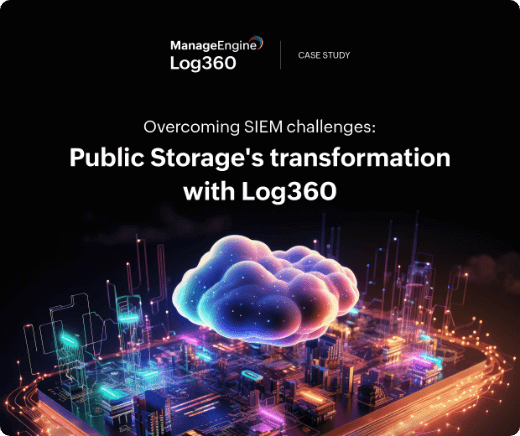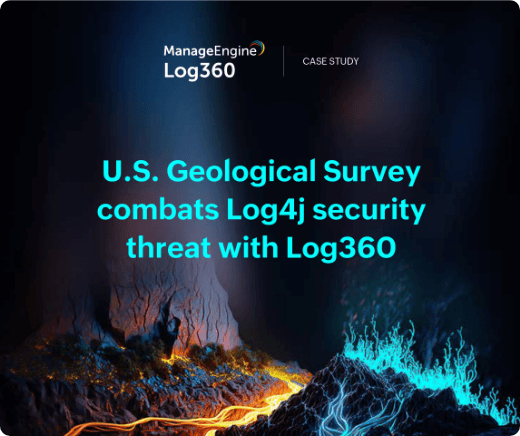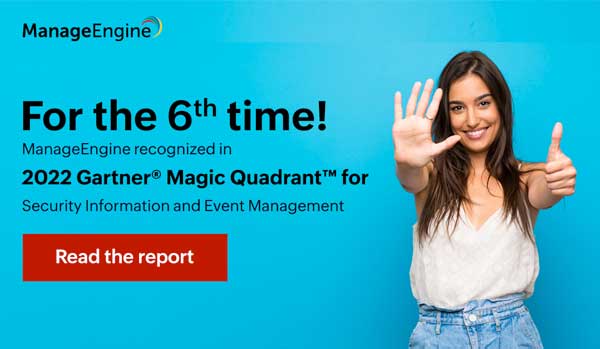Related content
What SIEM tools are and why they matter for enterprises
Security information and event management (SIEM) tools deliver a unified security view for security operations centers (SOCs), empowering threat detection, investigation, and response (TDIR). While compliance requirements initially drove SIEM adoption, today's evolving threat landscape has shifted its core value. These tools enable proactive defense, helping security teams transition from passive compliance reporting to rapid threat hunting and incident response.
As a result, modern SIEM tools are essential for enterprises aiming to achieve both regulatory readiness and measurable improvements in cyber resilience.
Expert insights
Subhalakshmi Ganapathy is a cybersecurity expert specializing in threat detection, risk management, compliance, and security framework implementation. She's a recognized thought leader who actively shares insights to help organizations build robust defenses against modern threats.How SIEM became indispensable for SOCs
SIEM tools have transformed security operations by bringing together and correlating data from every corner of IT, including EDR, DLP, firewalls, and more, into a unified console, exposing blind spots that isolated solutions routinely overlook.
Their strength lies in seamless integration and deep customization, empowering organizations to tailor threat detection, automate incident response workflows and playbooks, and adapt quickly as security challenges evolve. Now, with cloud-based SIEM, they've evolved to address previous architectural and deployment complexities. Modern cloud-SIEM platforms offer flexible, scalable deployment, reducing infrastructure overhead and delivering faster onboarding, making advanced security analytics accessible for organizations of all sizes.
What truly sets SIEM tools apart are their ability to unify both threat detection and compliance management within a single platform, allowing enterprises to address security risks and meet regulatory obligations efficiently without toggling between systems.
Top SIEM tools
Choosing the right SIEM solution is critical for any security team, and the market offers a wide range of options. Leading comparison sites like Gartner® Peer Insights provide real user reviews and technical evaluations, while analyst reports such as the Gartner Magic Quadrant™ for SIEM 2025 offer strategic insights to help security leaders match solutions to their enterprise needs.
Check out our data-driven comparison of the top SIEM tools for 2025 below.
ManageEngine Log360
ManageEngine Log360 is a unified SIEM platform that integrates log management, advanced security analytics, user and entity behavior analytics (UEBA) and AI-based investigations, built-in SOAR capabilities, and integrated compliance management into a single, intuitive console. With options to deploy in both on-premises and cloud environments, Log360 empowers security teams with comprehensive visibility, real-time threat detection, and automated incident response. It offers seamless integration with a wide range of security tools, audit-ready compliance reports for major regulations, and guided investigations to simplify deployment and daily operations. Log360 is especially notable for its cost-effective licensing, rapid onboarding, and strong focus on customization and automation, making it accessible for organizations of all sizes while ensuring adaptability to unique security and compliance needs.
Highlights of Log360:
- Unified security platform with extensive customization and integration capabilities, combining log management, UEBA, correlation, and guided investigations for holistic threat detection and response.
- Pre-packaged compliance audit templates, violation alerts, and compliance risk consoles streamline regulatory readiness and operational efficiency.
- Intuitive dashboards, guided investigation workflows, and flexible deployment options with minimal training efforts reduce complexity and accelerate time-to-value.
- Cost-effective licensing and strong onboarding and implementation support make Log360 an attractive choice for enterprises seeking robust security without the overhead of legacy SIEMs.
- Ideal for organizations prioritizing centralized visibility, proactive threat hunting, and compliance automation.
Splunk Enterprise Security
Splunk Enteprise Security is a popular SIEM and data analytics platform known for its powerful search, real-time monitoring, and extensive customization. It supports a wide range of security and severability use cases and is backed by a mature ecosystem of integrations and community resources. Splunk's architecture allows organizations to ingest and analyze massive volumes of data, delivering deep visibility and threat detection across complex environments.
Considerations
Splunk's advanced capabilities come with a high total cost of ownership, especially as data volumes grow. The platform also requires significant expertise for setup and ongoing management. While its analytics are robust, the behavioral analytics and automation capabilities depend on building complex queries compared to the more intuitive next-generation SIEMs.
Get to know why Concurrent technology corporation migrated from Splunk to ManageEngine Log360
Exabeam New-Scale Fusion
Exabeam New-Scale Fusion is a next-generation, cloud-native SIEM solution specializing in behavior-based threat detection and automated response. It leverages advanced UEBA to identify insider threats and sophisticated attacks, while its native SOAR integration streamlines investigation and remediation. Exabeam’s prescriptive workflows and automation capabilities help security teams respond quickly and efficiently.
Considerations:
Initial configuration can be complex, and organizations may encounter a learning curve. Premium features and advanced analytics can increase costs, making it important to assess the total investment for long-term use. Its recent merger and acquisition with LogRhythm has stalled the pace of its innovation and adaptation to evolving market demands. Some users note that documentation and support are generally good, but customization can be time-consuming and may require specialized skills.
Microsoft Sentinel
Microsoft Sentinel is a cloud-native SIEM that integrates seamlessly with Microsoft 365 and Azure environments. Its scalable, pay-as-you-go model and built-in automation make it easy for organizations to deploy and manage security monitoring in the cloud. Sentinel’s analytics, threat intelligence, and investigation tools are particularly strong for organizations already invested in the Microsoft ecosystem.
Considerations:
Sentinel users often point out that third-party integrations are less robust than competitors, making it less attractive for organizations with diverse security stacks. There is also a learning curve for teams unfamiliar with Microsoft data sources, and some reviewers mention that advanced analytics may require additional configuration and pricing.
IBM QRadar
IBM QRadar is known for its advanced threat intelligence, modular architecture, and strong correlation capabilities. Users value its AI-powered analytics and app marketplace, which enhance productivity and threat detection.
Considerations:
QRadar’s high cost and complex upgrade process are common concerns. Reviews frequently cite limited reporting capabilities, weak UEBA features, and the need for external tools for advanced reporting. Distributed deployments can be challenging, and product support may require additional investment.
Securonix
Securonix is recognized for its analytics-driven UEBA, cloud partnerships, and vertical-specific content. Reviewers appreciate its strong threat detection and flexible deployment options.
Considerations:
Customers note that Securonix's native SOAR capabilities are less mature, and standard licensing includes less hot storage than competitors. Some users find the interface complex, and advanced orchestration features may lag behind other leading SIEMs.
Sumo Logic
Sumo Logic’s cloud-native SIEM is known for real-time analytics, scalability, and flexible pricing. It is favored by organizations with dynamic, cloud-first environments.
Considerations:
Scaling costs and the learning curve for advanced customization are common concerns. Some users wish for more out-of-the-box integrations and enhanced alerting features. Reviewers also mention that while deployment is easy, advanced rule creation may require expertise. Know more about Sumo Logic from here.
Elastic Stack (ELK)
Elastic Stack (ELK) is favored for its open-source flexibility, powerful search, and visualization capabilities. It is popular among organizations with strong in-house expertise seeking tailored SIEM solutions.
Considerations:
Setup and ongoing management are resource-intensive, and native SOAR and advanced analytics are lacking compared to commercial SIEMs. Users often mention the need for significant technical skills and additional tools for full SIEM functionality.
Rapid7 InsightIDR
Rapid7 InsightIDR is valued for its automated detection, user-friendly interface, and strong endpoint visibility. Quick deployment and responsive support are frequently highlighted by users.
Considerations:
Some reviewers report that advanced analytics and customization options are more limited than competitors, and the platform is best suited for mid-sized organizations. Integration breadth and depth may also be lacking for larger enterprises.
SentinelOne Singularity AI SIEM
SentinelOne Singularity AI SIEM leverages AI-powered investigations, hyperautomation, and real-time analytics. Early reviews highlight its innovative approach and scalability.
Considerations:
As a newer entrant to the SIEM field, some users note that the feature set is still maturing and may not yet match the depth of longer-established SIEMs. Integration options and advanced orchestration features are areas to watch as the platform evolves.
For more detailed, real-world reviews and ratings of SIEM tools, visit user review platforms like Gartner Peer Insights or Capterra.
ManageEngine Log360 customer stories
Choosing the right SIEM tool: Key features
Selecting the right SIEM tool is fundamental to building a resilient security posture and achieving comprehensive threat management. Leading analyst firms such as Gartner recommend evaluating SIEM solutions based on critical capabilities like architecture, deployment flexibility, analytics, TDIR, and compliance management. These areas provide a valuable benchmark for initial comparison.
However, implementation often uncovers additional complexities, from integrating the SIEM with your existing IT stack, tailoring capabilities to your unique business requirements, overcoming operational challenges shaped by your SOC staffing and expertise, your enterprise's cloud adoption plan—and most recently—your AI strategy.
To make a confident, future-proof choice, prioritize a SIEM tool that offers:
-
Centralized data aggregation
Unified log management across endpoints, networks, cloud platforms, and existing security stacks to eliminate blind spots and provide comprehensive visibility. Bonus points go to a tool that ingests security telemetry and non-event data for enriching analysis. -
Advanced analytics
Machine learning, behavioral analytics, and AI-driven investigation capabilities to detect sophisticated threats, reduce false positives, and accelerate root cause analysis and incident investigation. Enriching analysis with non-event data such as threat feeds is essential for effective analysis. -
Seamless integration
Compatibility with your current deployments, such as firewalls, cloud services, EDR, XDR, or data security solutions, ensuring smooth data flow and enabling a coordinated defense across your entire security ecosystem. Make sure the integrations are bi-directional, supported with data ingestion and workflow or playbook execution on the application for a holistic threat management approach. -
Customization and automation
Flexible rule creation, tailored dashboards, and automated workflows, preferably AI-based automations, that adapt to your specific use cases and streamline incident response. -
Compliance and reporting
Built-in support for regulatory requirements, with automated, audit-ready templates for various mandates, such as the PCI DSS, the GDPR, HIPAA, SOX, FISMA, the ISO 27001, and more, to simplify compliance efforts. Customizable templates for your internal security audits and compliance violation alerts to immediately address the risks are also helpful. -
Scalability and deployment flexibility
Options for on-premises, cloud, or hybrid deployment, ensuring your SIEM can scale alongside your organization's growth and evolving security landscape. -
User-friendly interface
Intuitive dashboards and guided investigation consoles that empower security analysts of varied experience levels to act decisively and efficiently.
Ultimately, the best SIEM tool is one that balances technical excellence with practical value, addressing your organization's operational realities, resource constraints, and strategic goals. By focusing on these key features, you position your security operations for both immediate impact and long-term resilience.
How ManageEngine's SIEM tool helps secure businesses
Check out the latest features of
ManageEngine's SIEM solution, Log360
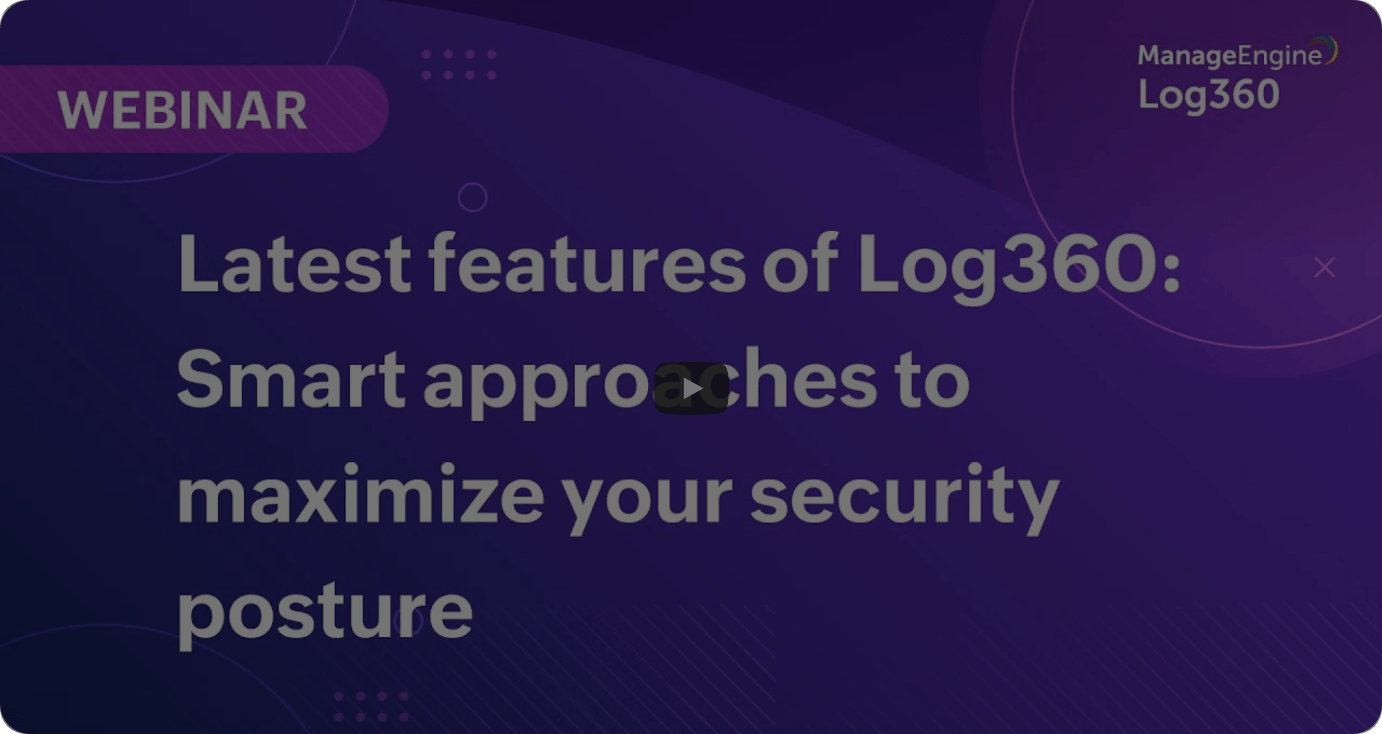
SIEM tool deployment: Critical risks you can't afford to miss
Implementing a SIEM tool or migrating from one SIEM solution to another can transform enterprise security, but organizations often encounter several operational and technical hurdles along the way. They include:
-
Alert fatigue and false positives:
SIEM tools can generate an overwhelming volume of alerts, many of which can be false positives. This constant noise can desensitize security teams, causing real threats to be overlooked and slowing down incident response. Invest in SIEMs with advanced correlation, AI-based alert prioritization, and customizable rules to filter out noise and surface only actionable incidents. -
Understaffed SOCs:
Running SIEM tools effectively requires specialized expertise in configuration, threat analysis, and most importantly, ongoing tuning. Many organizations struggle to find and retain analysts with the necessary skills, which can lead to underutilized or misconfigured SIEM solutions. To overcome this challenge, provide ongoing training for your security team, leverage vendor support, or consider managed SIEM services if in-house expertise is limited. -
Complex configuration and tuning:
Customizing correlation rules, detection logic, and dashboards to match unique business requirements is an ongoing challenge. Without regular tuning, SIEM solutions may either miss critical incidents or inundate teams with irrelevant alerts. To overcome this, consider adopting a SIEM solution with intuitive configuration tools and automated tuning capabilities, and schedule regular reviews to keep detection logic aligned with evolving threats. Look for SIEM tools that offer updated security content aligning with the threat landscape. -
Performance and reliability concerns:
SIEM platforms must process and analyze large volumes of data in real time. Performance bottlenecks, slow queries, or system outages can delay threat detection and hinder investigations. So plan capacity carefully, keep monitoring your system's health, and choose a SIEM solution that scales efficiently with your data volume. -
Hidden and ongoing costs:
Beyond initial setup, organizations often face unexpected expenses related to data storage, ongoing rule tuning, and system maintenance. These hidden costs can strain budgets and complicate long-term planning. Evaluate the total cost of ownership up front, including licensing, storage, and support. Opt for transparent pricing models and regularly review your SIEM usage to optimize costs.
Need to explore ManageEngine SIEM? Schedule a SIEM tour with our experts
starts at $2,130
To assist your evaluation Log360 offers:
- 30-day, fully functional free trial
- No user limits
- Free 24/5 tech support
Thanks for your interest in ManageEngine Log360
We have received your request for a personalized demo and will contact you shortly.
Fill this form to schedule a personalized web demo
Frequently asked questions
What are SIEM tools?
Security Information and Event Management (SIEM) tools are vital for any SOC. They help teams detect, investigate, and fix cyberthreats. Acting as a unified security platform, SIEMs centralize security data, giving organizations full visibility into their networks to boost their cyber resilience and help them meet compliance needs.
What are cloud-based SIEM solutions?
Cloud SIEM refers to a SIEM solution that is deployed and managed in the cloud, rather than on-premises within an organization's own data center. It's essentially SIEM as a Service, where the SIEM vendor hosts and maintains the infrastructure, software, and often the underlying analytics engines.
What are the differences between cloud-native and cloud-based SIEM solutions?
While a cloud-based SIEM broadly refers to a SIEM solution hosted in the cloud, a cloud-native SIEM goes a step further. It's a SIEM that is built from the ground up to leverage the unique capabilities and architecture of cloud computing environments. Cloud-based SIEM offers scalability, reduced infrastructure overhead, and centralized monitoring for logs and events from various sources, including on-premises and cloud environments. Cloud-native SIEM tools provide seamless integration with cloud services, advanced analytics for cloud-native threats, and often includes automation for incident response within the cloud ecosystem.
What are the key benefits of deploying a SIEM solution?
SIEM solutions boost security operations by improving threat detection, speeding up incident response, and strengthening overall security. By integrating with an organization's existing tech and security tools, SIEMs provide unmatched visibility into security and event data, enable effective threat hunting, and offer automated response playbooks to tackle threats.
What are the critical capabilities that enterprises should look for in a SIEM tool?
When choosing a SIEM tool, look for solutions that offer centralized data collection and seamless integration with their current security tools. Prioritize platforms with advanced analytics, such as machine learning for behavioral pattern detection, correlation, and AI-powered threat detection. Essential features also include prebuilt detection rules, remediation playbooks, and broad customization options.
What are the capabilities of ManageEngine's SIEM tool?
ManageEngine's SIEM solution, Log360, centrally collects and analyzes security data from diverse sources for real-time threat detection. It leverages a correlation engine, threat intelligence, integration and UEBA to identify anomalies and potential attacks. With dark web monitoring, cloud protection, and data security capabilities, Log360 offers guided investigations and contextual enrichment to expedite threat investigations and rapid threat containment. It also offers automated incident response, compliance reporting for various regulations, and unified security monitoring across on-premises and cloud environments.
- What SIEM tools are and why they matter for enterprises
- Top SIEM tools
- ManageEngine Log360 customer stories
- Choosing the right SIEM tool: Key features
- How ManageEngine's SIEM tool helps secure businesses
- SIEM tool deployment: Critical risks you can't afford to miss
- FAQs





